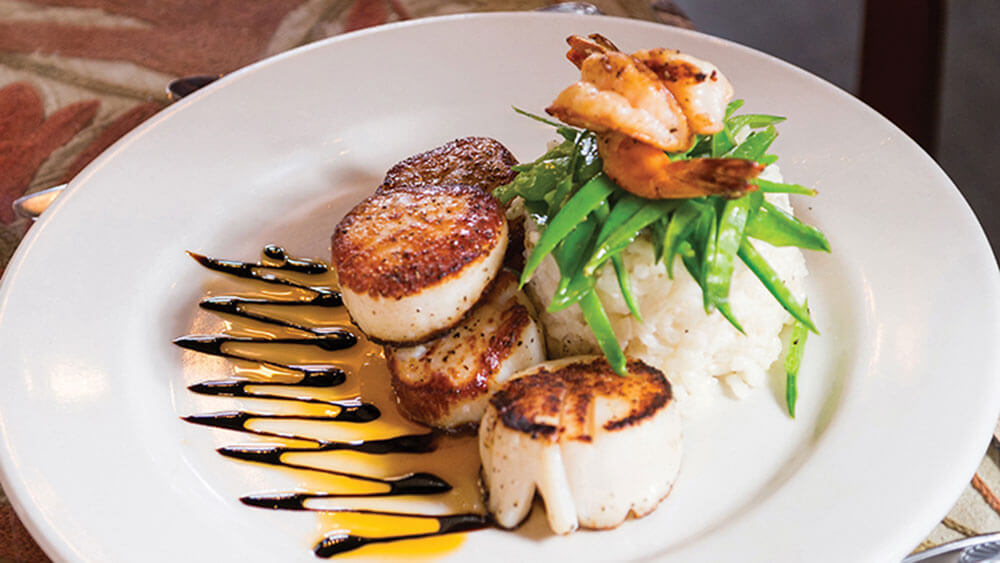Once upon a time (well, 2005) in Providence, Rhode Island, some troubling news spread through the convention and visitors bureau. A study of regional culinary destinations commissioned by the Providence Warwick Convention & Visitors Bureau (PWCVB) ranked the coastal New England city near the bottom of the pack. For people who lived and ate there—including the CVB’s own executives—it was both a shock and a wakeup call.
“It was crazy,” said Kristen Adamo, PWCVB’s vice president of marketing and communications, “because having worked in the culinary field here, I knew we had a lot of great talent.” Indeed, Adamo had just joined the bureau from a prior job at Providence’s Johnson & Wales University (J&W), the renowned culinary and hospitality school. There wouldn’t be much of a grace period. “I had basically just started when our then-CEO handed me the study and said, ‘Fix this,’” Adamo said. “That became my mission, our culinary branding.”
As a Rhode Island native, Adamo knew that Providence was home to a rich food scene born of the city’s many ethnic groups—Italian, especially—as well as the waves of trained chefs who graduate from J&W and stay to open their own restaurants. Even a decade ago, long before the terms “foodie” and “farm-to-table” were widely used, she could foresee the ascendance of food culture as a tourism driver, especially for smaller cities.
So how could scrappy Providence claim its rightful place among America’s great food cities? “No matter what destination you go to, even if you don’t venture out into the community, you still have to eat,” Adamo said. “Food is something we do very, very well. Clearly, that message wasn’t getting out. And Providence is small enough that it was really easy for us to work together on this.”
In 2005, the most renowned food scenes were in bigger cities such as New York, Los Angeles, and Chicago. By going whole hog in promoting its own scene more than a decade ago, Providence—population: 178,000—was one of the first so-called second-tier cities to embrace and elevate its culinary capital as a magnet for leisure and business travelers. And that story offers insights for other similarly sized cities still working out the kinks on their culinary marketing.
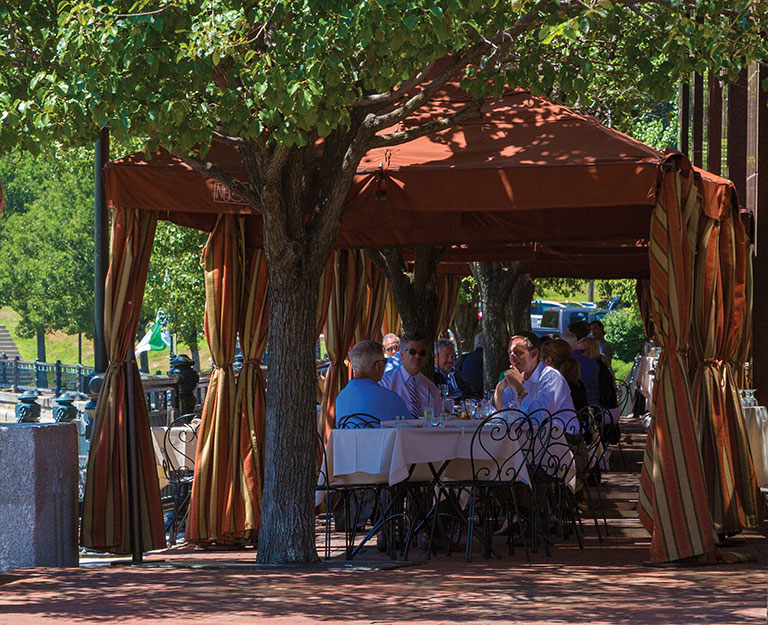
Cafe Nuovo in downtown Providence
Cooking Up a Plan
Practically every destination has its signature food or drink, some-thing emblematic of its particular culinary strengths. In Vermont, the maple creemee speaks to the state’s dairy heritage. In Maine, the lobster roll is tied to seafaring traditions. In Providence, hallmark dishes and drinks often come with a quirk: The Olneyville New York System restaurant’s classic eponymous “wiener,” for example, is slathered in meat sauce, while beloved local “coffee milks” are milk blended with coffee-flavored syrup. Both victuals reflect the patchwork of traditions in the Ocean State. “One of the other things that really separates us from other cities was that we have one of the best culinary schools in the country [J&W] in our backyard, and they’re consistently turning out graduates who stay,” Adamo said. “We put our boots on the ground so that [the chefs] knew who we [the CVB] were, and also to make sure we knew what our culinary product was and that we got that out to the public.”
Adamo began connecting chefs and producers with the CVB. In 2006, Providence became one of the first modestly sized U.S. cities to start a Restaurant Week. “Providence is small enough that it’s really easy for us to work together,” Adamo said. “We had a focus group with local restaurateurs and chefs, and they helped us craft the time of year, the price points, all of that. We actually did a media boot camp for some of our chefs on how to present yourself to the press.”
The first Providence Restaurant Week took place in July 2006, and 40 of the city’s hundreds of restaurants participated. Adamo used that as a leaping-off point for other efforts. She held a roundtable with culinary journalists and local chefs. She began loading PWCVB’s web-site with information about local restaurants, as well as story ideas for journalists. She plugged Providence relentlessly to national news and entertainment outlets, and brought in food writers and bloggers to experience the dining culture firsthand.
Her efforts began to bear fruit. In 2009, Food Network’s Rachael Ray came to visit as part of her “Rachael’s Vacation” show, and the chef at local mainstay Gracie’s appeared on NBC’s “Today” show. Eventually, PWCVB began shooting cooking videos with local chefs, and partnered with a Rhode Island television morning show for a segment each Monday featuring them—giving the chefs on-air experience and the CVB reels it could use to pitch even more culinary stories to national media.
As Providence’s reputation as a dining destination steadily grew, a funny thing happened: Group travel around food also grew. “As our culinary brand grew strong on the leisure side, it trickled into our meetings marketing,” Adamo said. PWCVB got creative with how it incorporated Providence’s culinary identity into meetings and conventions, from offering recipes and utensils to visiting delegates, to encouraging chefs to meet with groups dining inside their restaurants—offering that extra dose of authenticity and backstory. The city also began to attract food-centric events. “The American Cheese Society was here,” Adamo said, for its 32nd Annual ACS Conference & Competition in 2015. “We also had StarChefs’ Rising Star Awards [in 2014]. And we’ll have a group not too far in the distance that studies sensory science and the history of taste.”
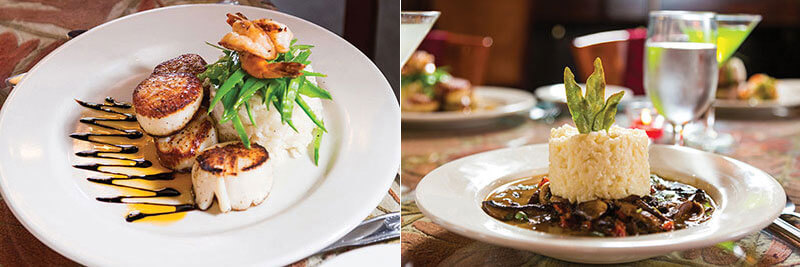
The culinary influences at Providence’s CAV Restaurant are global — and the venue doubles as an antique shop.
Heating Up in the Heartland
A decade after Providence began to broadcast its culinary prowess, the term “farm-to-table” has become somewhat hackneyed. Behind that slogan, however, is a vital movement that has offered a shot in the arm to smaller cities ringed by farms—notably, those in the soil-rich Midwest whose downtowns are finding new life through the current obsession with heightened culinary experiences and eating local food.
“We had a lot of chefs and restaurateurs who maybe had left and gone to other cities, coastal or international cities, and have returned to open up restaurants,” said Lisa Wallace, senior communications manager, conventions and meetings, for Visit Indy. “It’s really affordable to do that here, and it’s brought the revitalization of our downtown neighborhoods. The mix of having great chefs with being surrounded by farms and rich agriculture to source from, as well as some innovative pioneers in the food industry, came together to create this vibrant food scene. In last three years, it’s really taken off.”
Within the last year alone, about 30 new restaurants have opened in Indianapolis, from Gregory’s Russian Restaurant to the latest branch of hipster enclave Punch Bowl Social. While that trend has been a boon to Indy’s downtown, it has also translated into enhanced group experiences. “Our visitor numbers are up, our convention numbers are up,” Wallace said, “and all of those people are demanding great places to eat.”
When Visit Indy creates microsites for incoming groups, it includes links to lists of restaurants that populate by proximity to the convention center. “In general, people are looking to travel for food, and on the convention side, they’re looking to incorporate local,” Wallace said. “We’re aware that we’re not the first city you think of when you think of [culinary], but there’s a lot of great things going on here and it’s our job to get that message out.”
To do that, Visit Indy brings in groups of food writers and photographers for press trips, and advertises and aligns with national media such as Zagat, Eater, Food & Wine, and Bon Appétit. The CVB has divided the city into several cultural districts—including Fountain Square, Mass Ave Arts District, Broad Ripple Village, Fletcher Place, and Market East — and created walking maps for each, as well as for downtown breweries, distilleries, and restaurants. It’s also compiled quirkier guides that focus on craft cocktails, doughnuts, soul food, and vegetarian fare. Wallace suggests a smaller city’s strengths lie both in walkability, “which planners love,” and in collaboration between partners—the sense that everyone is in it together, “trying to elevate the city’s brand.”
When it comes to groups, Indy’s culinary players can serve up authenticity in myriad forms. Last September, as part of its 2016 Annual Convention, the National Belting Association held a dine-around along Mass Ave, giving attendees the option to dine at 11 restaurants offering sushi, artisan pizza, and craft burgers, as well as con-temporary American, Irish, German, and Mexican fare. The previous fall, the 2015 National Funeral Directors Association (NFDA) International Convention & Expo held a spouse event for NFDA’s board at a local restaurant, as well as a wine tasting at a local wine bar and a chocolate tasting at a local chocolatier for attendees.
But even though Indianapolis’ restaurant scene is rap-idly evolving, the city’s can’t-miss dish is a longtime main-stay: the shrimp cocktail at St. Elmo Steak House. “It’s a world-famous steakhouse that has been around since 1902, in its original location,” Wallace said, “and they make their cocktail sauce fresh every day with the best horseradish they can find.”
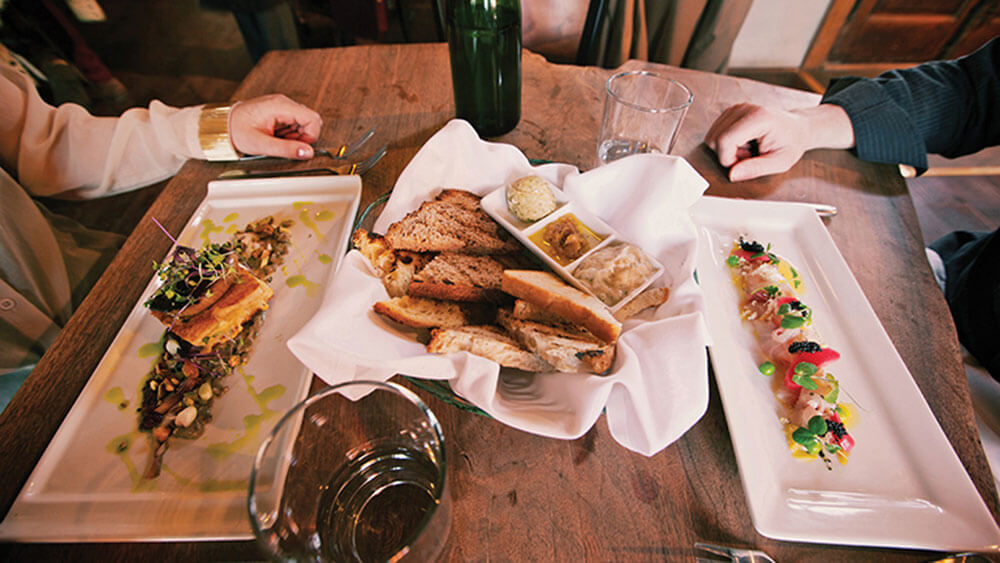
Bluebeard in Indianapolis creates inventive small plates.
What’s Next?
While some smaller cities are still finding creative ways to catalog and publicize their culinary scenes, others are further along on that trajectory. For a destination that has exhaustively catalogued its chefs and culinary scene, created maps, and spent thousands on national advertising and courting food writers, what lies ahead? And will the food bubble burst anytime soon?
Probably not in Providence, which still sees ever-growing interest in its food scene. Last summer, the city was named number two on Travel + Leisure’s list of “Best Cities for Foodies,” one of many accolades in recent years. Adamo has noticed more requests for group cooking classes and demos with chefs, who are happy to oblige, and the CVB has embarked on a partnership with the Providence Journal: “Small Bites: Easy-to-Digest Recipes,” a series of short videos featuring local chefs documenting their creations.
For Adamo, the next chapter in Providence’s food story comes down to an oft-used buzzword. “Millennials are really looking for that authentic experience,” Adamo said, and that can come in the form of more niche, ethnic food—a shift away from fine dining that is happening all over the culinary landscape. “We’re looking for more of those untold stories from our outlying neighborhoods, and part of that is a culinary story,” Adamo said. “There’s a lot of really cool ethnic markets that the right kind of tourist or meeting delegate would like to see, or the hole in the wall that has the best Thai food or Mexican food.”
In Indianapolis, the region’s access to ample grain has fueled an ongoing boom in new breweries and distilleries, a trend that connects groups with another layer of local flavor—either through buyouts or via serving local beer, spirits, mead, and other beverages at catered events. The International Marketplace, a bazaar on the city’s north-west side, with “over 100 languages represented and over 70 restaurants,” Wallace said, may be the next hot spot. “For those looking to shop authentic products or go to a restaurant and try authentic cuisine from an incredible number of countries, that’s the place to go.”
For anyone who doubts that the next wave of dining has shifted to street food and informal bites, consider that two of Singapore’s thousands of street hawkers received elusive Michelin stars a few months ago—the first time street food has ever received that honor.
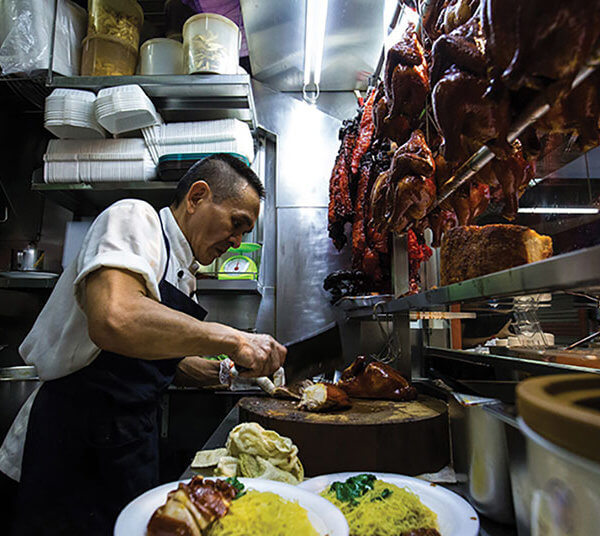
In 2016, two of Singapore’s street-food hawkers were awarded Michelin stars — the first time that body has recognized street food.
The Singapore Tourism Board works to connect groups with food experiences — such as during the 2016 Annual Meeting & Exhibition of the International Society for Magnetic Resonance in Medicine (ISMRM), when 3,500 delegates converged on Makansutra Gluttons Bay, one of the city’s street-hawker centers, which ISMRM bought out for its closing party. There, attendees sampled street food, listened to local music, and celebrated at nearby open-air bars. “For attendees who go to the meeting every year, the closing party really becomes important to give them placement,” Roberta Kravitz, ISMRM’s executive director, told Convene last year. “We wanted something that was very Singapore.”
Back in Providence, Adamo thinks PWCVB’s experience with the city’s food story is applicable to marketing other cultural areas—including the arts communities and its civic reputation. “You have to look at what makes you strong,” Adamo said. “We have great restaurants, but it can be a trap. You can’t just be known for one thing, or just be a great food destination. You have to be able to build off that, and that’s the work we’re doing now.”
Test Time
Earn one hour of CEU credit. Once you’ve finished reading this article, read the following material:
- “The Rise of Food Tourism,” a special report from the Ontario Culinary Tourism Alliance and Skift, available here.
To earn continuing education clock hours, visit pcma.org/convene-cmp-series to answer questions about information contained in this CMP Series article and the additional material.
The Certified Meeting Professional (CMP) is a registered trademark of the Convention Industry Council.

